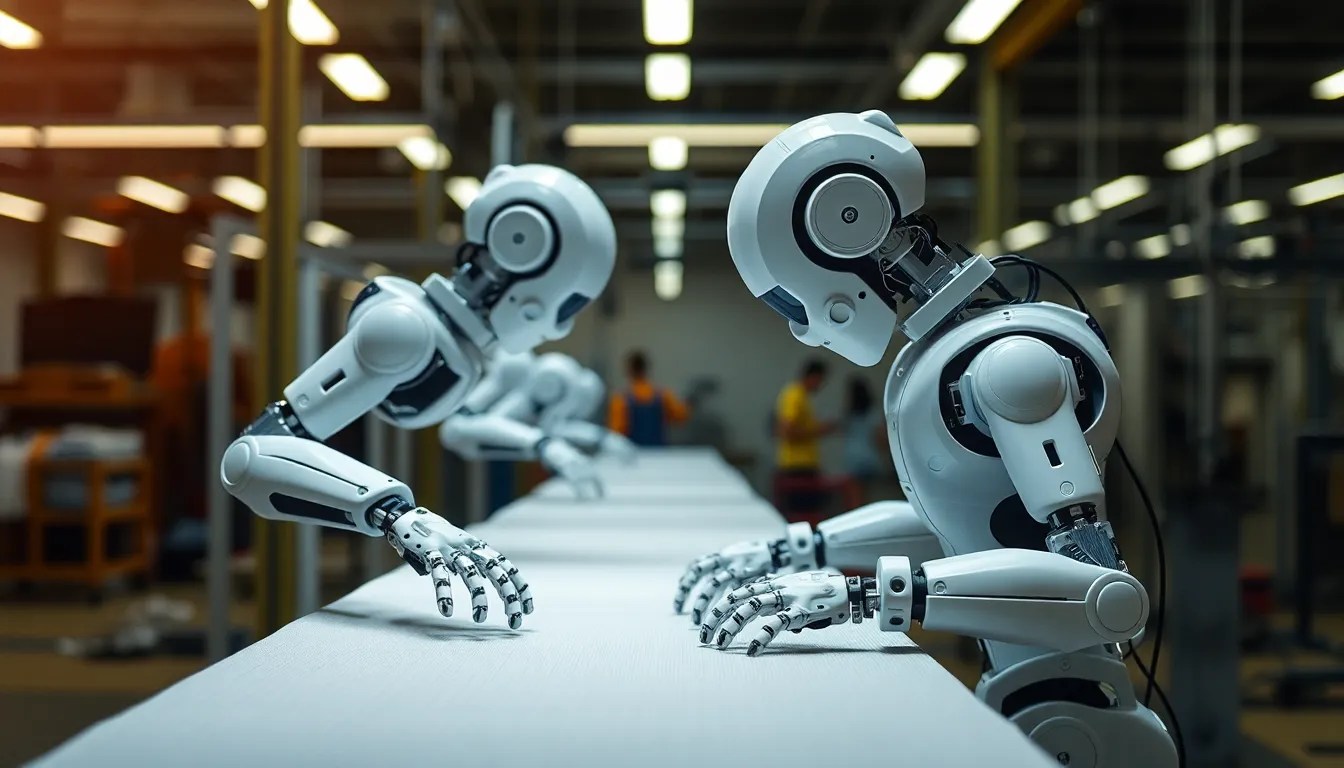How Robotics is Transforming the Textile Manufacturing Process
I. Introduction
The textile manufacturing industry has long been a cornerstone of the global economy, producing everything from clothing to upholstery. As consumer demands evolve and competition intensifies, the importance of innovation in textile production has never been more pronounced. In this dynamic landscape, robotics is emerging as a pivotal technology, revolutionizing how textiles are manufactured and setting new standards for efficiency and quality.
II. The Role of Robotics in Textile Manufacturing
Robotics in textile manufacturing encompasses various technologies designed to automate processes, enhance productivity, and improve product quality. The types of robotics commonly utilized in this sector include:
- Industrial robots for assembly and sewing
- Collaborative robots (cobots) that work alongside human workers
- Automated guided vehicles (AGVs) for material handling
Key functions of robots in the textile industry include:
- Automating fabric cutting and sewing processes
- Handling raw materials and finished goods
- Performing quality inspections and measurements
When comparing traditional manufacturing processes to robotic systems, the contrast is stark. Traditional methods often rely heavily on manual labor, leading to longer production times and higher rates of human error. In contrast, robotic systems can operate continuously, significantly speeding up production and enhancing precision.
III. Enhancements in Efficiency and Productivity
The integration of robotics into textile manufacturing has led to substantial enhancements in efficiency and productivity:
- Automation of repetitive tasks: Robots can take over monotonous and labor-intensive tasks, allowing human workers to focus on more complex duties.
- Reduction in production time: With robots working at high speeds and precision, the overall production cycle is shortened, enabling quicker turnaround times.
- Impact on labor costs and workforce dynamics: While automation may lead to reduced labor costs, it also necessitates a shift in workforce skills, placing greater emphasis on tech-savvy employees who can manage robotic systems.
IV. Quality Control and Precision in Textile Production
One of the most significant advantages of implementing robotics in textile production is the enhanced quality control and precision:
- Advantages of robotic precision: Robots achieve high accuracy in fabric cutting and sewing, minimizing the risk of defects.
- Reduction of errors and waste: With precise measurements and consistent performance, waste is significantly reduced, leading to lower material costs and improved sustainability.
Numerous companies have reported benefits from improved quality due to robotics. For instance, a leading apparel manufacturer implemented robotic sewing technology, resulting in a 30% decrease in product defects and a notable increase in customer satisfaction.
V. Innovations in Robotics Technology
Recent developments in robotics technology are further enhancing the capabilities of machines in textile manufacturing:
- Developments in AI and machine learning: These advancements allow robots to learn from experience, adapt to new tasks, and optimize their performance over time.
- Advanced robotics features: Modern robots exhibit dexterity and adaptability, enabling them to handle a variety of fabric types and complex designs.
- Future trends: As technology evolves, we can expect even greater integration of robotics with IoT (Internet of Things) and smart factories, leading to fully automated production lines.
VI. Environmental Impact of Robotic Textile Manufacturing
Robotics also plays a crucial role in promoting sustainable practices in textile manufacturing:
- Sustainable practices: Robotics enables more efficient use of resources, reducing energy consumption and minimizing waste.
- Reduction of resource consumption: Automated processes require fewer materials due to precise cutting and sewing capabilities.
- Potential for recycling: Robotics can facilitate the sorting and processing of textile waste, contributing to a circular economy.
VII. Challenges and Limitations
Despite the many benefits, the integration of robotics in textile manufacturing comes with its own set of challenges:
- Initial investment: The cost of acquiring and implementing robotic systems can be significant, posing a barrier for small to medium-sized enterprises.
- Technical challenges: Integrating robotics with existing manufacturing systems requires careful planning and expertise.
- The need for skilled workforce: There is a growing demand for skilled workers who can operate and maintain robotic systems, necessitating targeted training programs.
VIII. Conclusion
The transformative effects of robotics in textile manufacturing are profound, driving innovation and efficiency while enhancing product quality. As the industry continues to embrace these technological advancements, the future outlook is bright. Stakeholders, from manufacturers to policymakers, must recognize the potential of robotics and invest in the necessary infrastructure and training to harness these benefits fully. The call to action is clear: to thrive in a rapidly evolving market, the textile industry must adapt and innovate through the integration of robotics.



